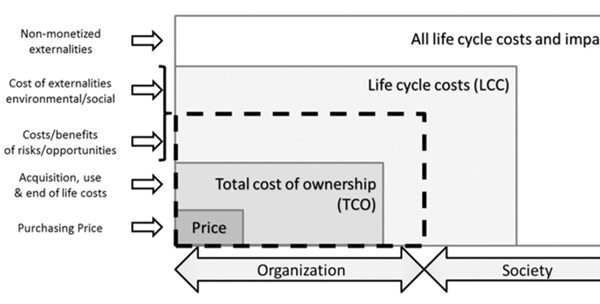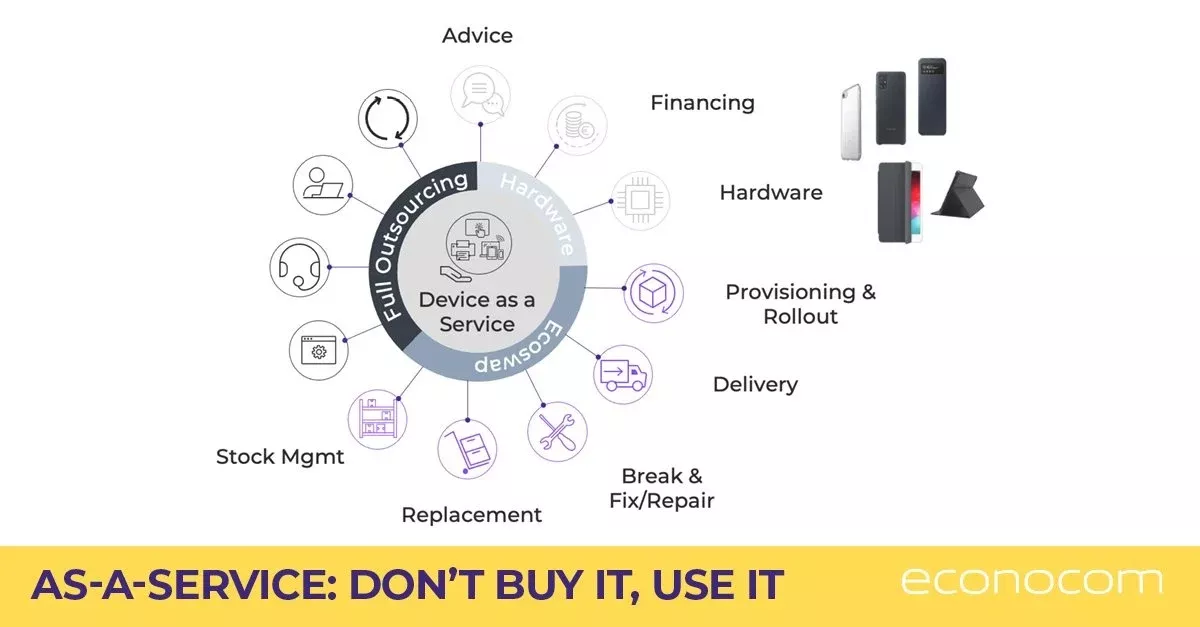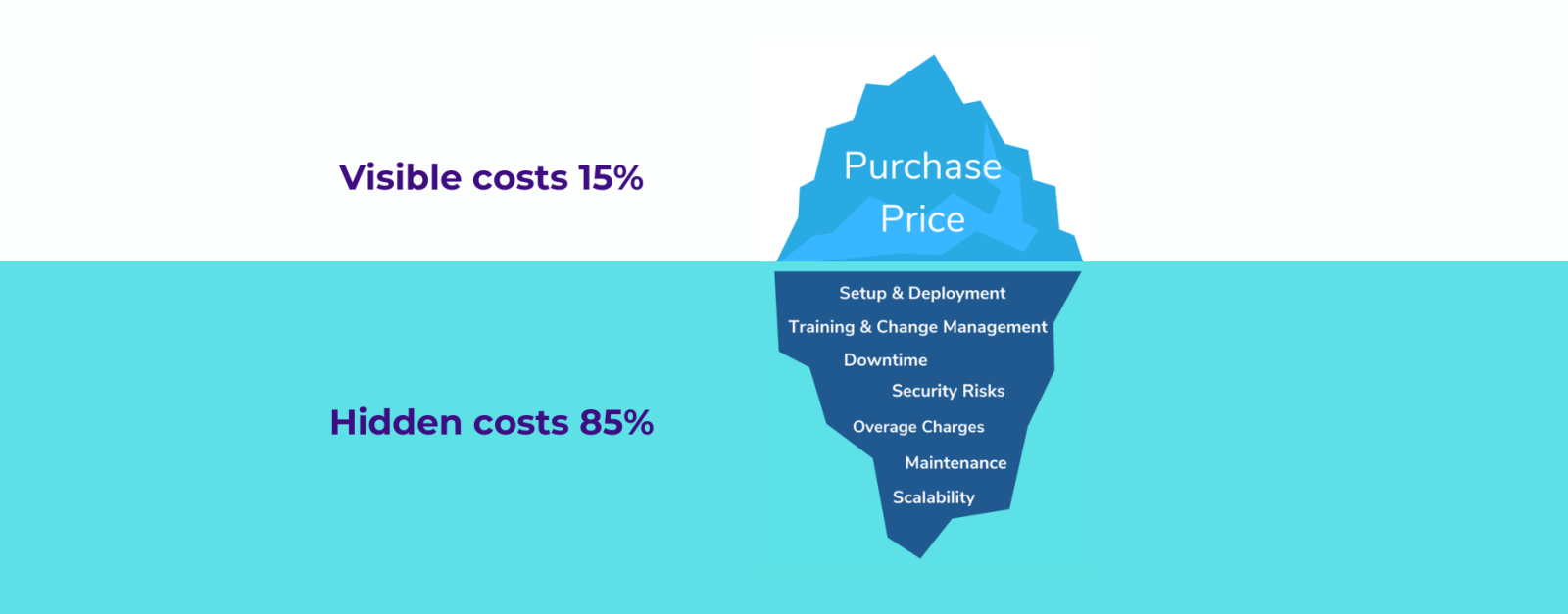In a previous blog on new modern purchasing strategies, we have already shown that new service-based value propositions are emerging in B2B and B2G, driven by a more functional view of product purchasing. These new value propositions have an important influence on the pricing of products and, thus, on the purchasing policies of tomorrow.
Buyers have long focused on price alone. Yet, in addition to the purchase price, there are many "hidden" costs in an acquisition. After all, as an organisation, you also must pay all the process costs that are associated with consuming a product. It is misleading not to include them in your purchasing policy. It is important to compare apples with apples, especially when comparing product-based and service-based value propositions.
The price of the device is only a fraction of the total cost
The classic example to demonstrate that is a printer. The device alone is not enough for a single print. You need paper, but also energy, ink, maintenance, etc. If you include that in your price calculations, you’ll get a different picture. In the case of the printer, the purchase of the original device represents only 5% of the total cost.
“In the case of a laptop, for example, the purchase of the device represents barely 30% of the total cost of ownership.”

This gives a different perspective when considering an "as-a-service" model. Do not compare as-a-service with full ownership. In this case, you need to look at all the costs associated with using a particular service or meeting a particular functional need. The image below, taken from the ISO standard on sustainable procurement, also puts the concept of price into perspective.
Lifecycle costs
The price is just the tip of the iceberg. If you want to know the cost of your carpet, your computer, your car, or any other business asset, you need to calculate the total cost over its life span.
“This lifecycle cost is the total cost plus all related external factors that you can convert into money, such as the CO2 impact.”
Buyers are becoming less likely to compare the gross price of a product for a single use and instead calculating the total cost. This is a more difficult exercise for buyers and suppliers, but it gives buyers a more strategic role in the finance team, as they can reveal and link many hidden costs. With the evolution of device-as-a-service, hardcore price chasing may also come to an end.

